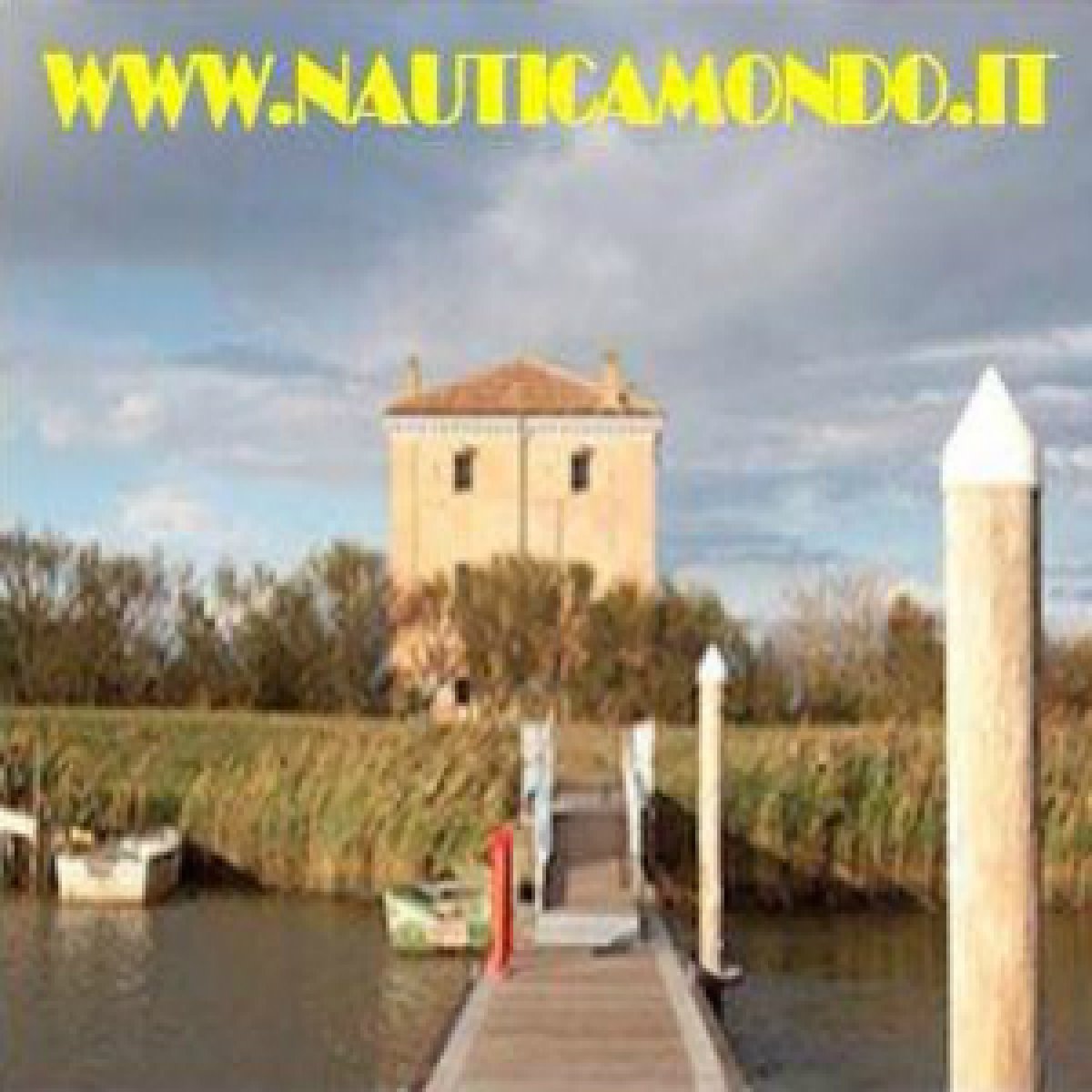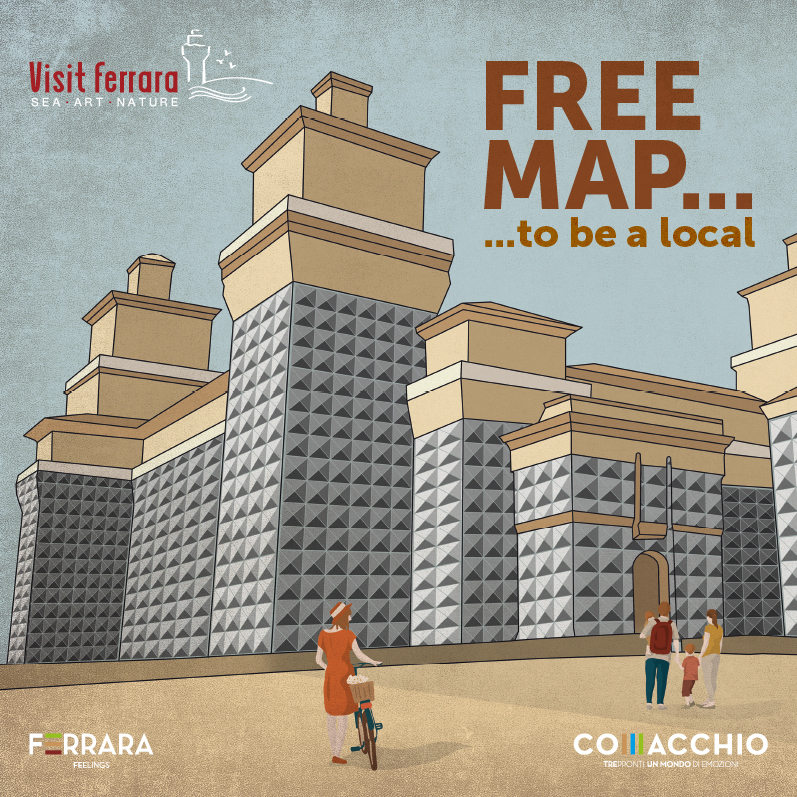Create Your Holiday
To be seen
Estense Castle
City of Ferrara's icon Estense Castle is the most important monument of Ferrara, also known as Saint Micheal, built by Nicolò d'Este's willing in 1385. It is right in the city center. Initially, it was a defence and military fortification, but later it turned int...
Schifanoia Palace
Fourteenth-century palace, Ferrara's art heritage, wanted by Alberto V d'Este as a place to relax and amuse, refuge from the boring daily life, Palazzo Schinfanoia, first among the "Delizie Estensi", now museum headquarters, famous for the inside, where it's preserved a huge tr...
MEIS
The National Museum of Italian Judaism and the Shoah - MEIS - recounts the over two thousand years of Jewish experience in Italy, letting us know about life, thought and essencial contributions to history and Country's culture, with special attention to the persecution's period and...
Municipal Theatre
As one of the most beautiful examples of theatre in Italy, Ferrara's Municipal Theatre was built between 1773 and 1797, based on a project by Antonio Foschini and Cosimo Morelli, and inaugurated in 1798 with "The Orazi and the Curazi", Marco Portogallo's opera. It is located in Cor...
Palazzo dei Diamanti
The Renaissance building hosts the Civic Art Gallery and Ferrara Arte's exhibitions. The palace, a masterpiece of the architect and town planner Biagio Rossetti, was built from 1493 and it's among the most renowned palaces of italian Renaissance. Piano Nobile is the headquarters of the...
National Picture Gallery of Ferrara
Ferrara's Art Gallery born in 1836 thanks to Ferrara's Municipality's willing, to stop the scattering of the great artistic heritage of the city. Only in 1958 it bacame "National", when the owner became the State. Since 2015, the National Art Gallery is part of the unification ...
National Archaeological Museum
The link between the city of Spina and Greece is told in a museum, the National Archaelogicl Museum in Palazzo Costabili, which preserves finds of the city of Spina, one of the most important city of Po Valley's Etruria, and proofs of its precious links with Greece, from bronze ob...
The City Walls
Before entering Ferrara, you should visit the city walls, the history of Ferrara begins here. Nine kilometres of city walls that enclose Ferrara’s old city centre and its precious monuments, which can be enjoyed by walking or cycling. The city walls keep doors, passages ...
Casa Romei Museum
"Casa Romei" is one of the best preserved example of noble residence between Middle Age and Renaissance. The Renaissance dwelling par excellence. It was built in the middle of the XV century by Giovanni Romei, then it was enlarged and adorned because of Polissena d'Este's marria...
Piazza Ariostea
The ancient and famous elliptical square which every year hosts Ferrara's Palio. Imagined by Biagio Rossetti to be one of the critical points of "Addizione Erculea", and became famous due to Ferrara's Palio, which takes place every last Sunday of May. Ariostea...
Via delle Volte
Ferrara's economic development reveals itself in an ancient street full of arches and suspension passages. If you want to know one of the most evocative and ancient street of Ferrara, go through Via delle Volte, medieval street which linked warehouses to small artisan shops. Exploring it will...
Cycling through Valleys and "Delizie"
CYCLING THROUGH VALLEYS AND "DELIZIE" Duration: 4 days Total distance: 180 km Difficulty: Easy – suitable for cyclists of all levels Type of route: Mainly flat, on cycle paths, low-traffic roads and dirt embankments Points of interest: Cities of art, valleys and nature r...
Nuovo Theatre
Ferrara's Teatro Nuovo, in the prestigious and central "Piazza Trento Trieste", every year offers a rich season of music, ballet, commedy, prose, culture and performance. Reopened in 2015, after a complex restoration, thanks to the theatre's beauty and extent, can host more than...
The river Po
The Po River, first Italian river for lenght, extension and capacity, is the main rivel flow that brushes the province of Ferrara in the North, it goes through it from West to East and marks the borders with the province of Rovigo and Veneto region. Until the XII century, the Po ri...
The Este Residences
All over Ferrara's territory there are villas, palaces and castles, wanted by the Estense family to spend some amusement and delight moments. They are called "Delizie Estensi", World Heritage in 1999, many of them crumbling and in ruins by now, only a few ar...
Argenta Valleys
From the ancient Argenta and Marmorta's Valleys, only Campotto's Valleys still exist, which today are used only during the rivers overflows. The remaining of the ancient Argenta's Valleys is divided in three main sections: Campotto and Bassarone's ...
The Vallette of Ostellato
Located not far from the highway Ferrara-Mare, in the town of Ostellato, built in Roman times near a river access roas, now in the center of large cultivated land. Between the nearby Idrovia Ferrarese and the drainage canals lies the Oasis of the Vallette of Ostellato, ideal for birdwaching, spor...
Comacchio
The city of Comacchio presrves the most original and fascinating historic center of Po Delta Park, UNESCO World Heritage. Heir of ancient Spina, it has really ancient origins, and today is still a lagoon city that fascinates thanks to its old town, which preserves untouched the original aspe...
Ancient Delta Museum
A real "sea-Pompeii" and a rich archaelogical resources' heritage, coming from the territory and narrating the history of the ancient Po's mouth. In the eighteenth-century building, the Invalids' Hospital, a two thousand years old exhibition reveals, through different t...
Comacchio's Valleys
Comacchio's Valleys represent one of the most extended humid areas of Italy and they are sited inside Po Delta Park. This brackish water territory has been declared Wetland of international importance, Site of Common Interest by EU and Special Protection Area for birds' preserva...
Comacchio's Lidos
26 km of coast with beaches of white and thin sand, the seven lidos of Comacchio are an ideal destination for a vacation at the sea with children, for the lover of open air activities and to relax. On its 26 km of coast 7 lidos follow one another: Volano, Nazioni, Pomposa, Scacchi, Porto Garibald...
Po Delta Park
One of the biggest and most important naturalistic protected and moist area in Italy and in Europe, which is at the east border of Po Valley and touche art cities of remmarkable depth such as Ferrara, Ravenna and Venezia. An area with unique environmental peculiarities, which make it a true heave...
Po Delta
Po's mouth is one of the most important area of naturalistic interest in Europe. Po river, with its wide delta, shapes a peculiar waterways that embraces many biodiveersity's elements which makes it a heaven for naturalists, biologists, birdwatchers and tourists. On motor vessel o...
Pomposa Abbey
The famous Benedictine monastic complex has really ancient origins, it seems it dates back to the VI century and it was once surrounded by water. Saint Mary's Church, the bell tower, the monastery, the Pomposa Museum and the Right Palace form the "Pomposa Insula". The complex always...
Delizia del Verginese
Gambulaga, Municipality of Portomaggiore. Recognized by UNESCO as a World Heritage Site, the Delizia Estense del Verginese is today one of the few Delights that testify in the territory of Ferrara the greatness and importance of the lords of Ferrara. Donated by Alfondo I d'Este to Laura Diant...
Mesola Wood
The natural reserve, the Great Mesola's Wood, has a surface of 1085 hectares and it's one of the last remaining of plain wood, that are in this territory. It has really ancient origins, the Mesola's Wood was already during the Middle Age one of the most ancient woods you could find on...
Tresigallo
Halfway Ferrara and Comacchio's Valleys, inside the green Po Valley, there is Tresigallo, an utopistic and ideal city. A thousand colors palaces, little towers, marble porticos, cylinders, cones, parallelepipeds, arches: walking throug these places is a unique and charmful experience. The sil...



